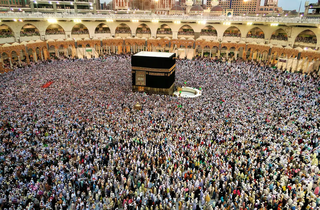This year's allocation represents an increase compared to previous years, reflecting growing demand and potentially signaling a sense of normalcy returning to the war-torn nation.
Minister Noor Mohammad Saqib emphasized transparency and inclusivity in the selection process. The first group of pilgrims will depart for Saudi Arabia on June 8th, with quotas distributed fairly across all Afghan provinces. Importantly, women will have dedicated spots, with roughly 8,000 pilgrims being female.
Ensuring a smooth travel experience, the ministry has arranged transportation for pilgrims from major cities like Kabul, Herat, Balkh, and Kandahar. Public and private airlines will collaborate to accommodate the large number of travelers.
The cost of Hajj for this year is set at $3,865.98 (around 277,006 Afghanis). A slight variation exists for Shia pilgrims due to separate transportation arrangements.
Hajj authorities have also designated quotas for specific groups within Afghan society. Nearly 4,000 officials from the Islamic Emirate government, migrants, heirs of martyrs, and over 3,800 new registrants will have the opportunity to participate in the pilgrimage. Notably, 3,941 Mujahideen veterans have also been allocated spots, reflecting a potential gesture of respect for those who fought in the long conflict.
The Ministry of Hajj and Religious Affairs is committed to providing a well-organized and spiritually enriching experience for all 30,000 Afghan pilgrims. This year's Hajj holds particular significance as it could represent a step towards normalcy for many Afghans who have faced immense challenges in recent years. (ILKHA)



 Dünya
Dünya
 Dünya
Dünya
 Dünya
Dünya
 Güncel
Güncel
 Güncel
Güncel
 Güncel
Güncel
 Güncel
Güncel
 Dünya
Dünya
 Dünya
Dünya
 Güncel
Güncel





